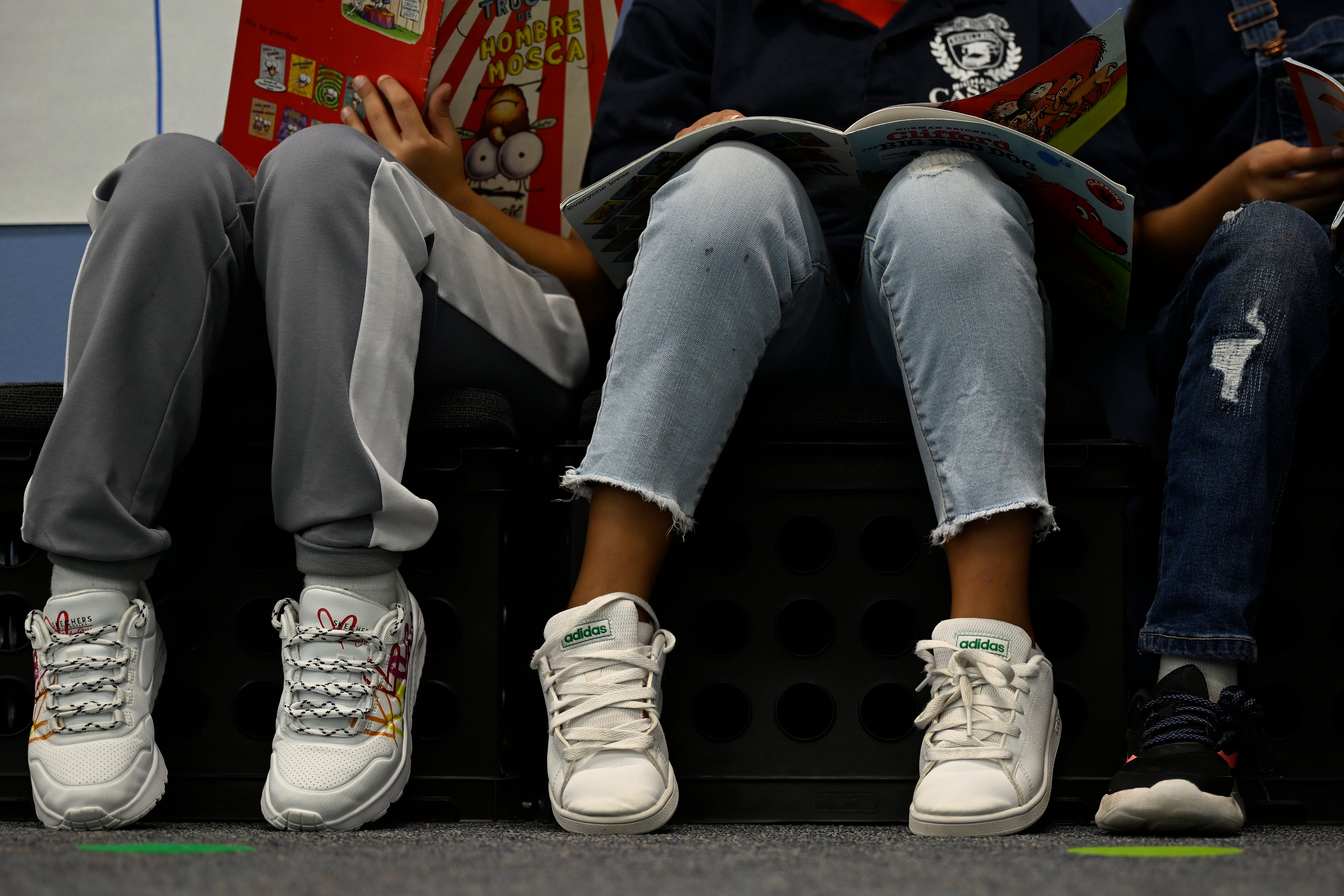Sign up for Chalkbeat’s free weekly newsletter to keep up with how education is changing across the U.S.
Test data from many sources suggest students are still behind where they were before the pandemic. But it would be pretty hard to figure that out from most states’ school report cards.
A new study from the Center on Reinventing Public Education — CRPE — graded these state report cards on how easy it was to find information about student achievement from before COVID to the present day, as well as on their general usability.
With a few notable exceptions, the center handed out pretty poor marks.
Just seven states — including Michigan, Pennsylvania, and Tennessee — scored an A for how easy they make it to compare academic performance over time, and 21 received a D or an F. New York, New Jersey, and Colorado received a C, and New York was among the worst states for usability. Illinois and Indiana, in contrast, received high marks for overall usability but don’t make it easy enough to see change over time.
Even as much of the data paints a dire picture, survey data shows parents aren’t too worried about academic recovery. The lack of easily accessible information could be contributing to that complacency, said Morgan Polikoff, the study’s lead author and an education professor at the University of Southern California.
“We would all like to have moved past this and think things are back to where they were, but it’s just not true,” he said. “Achievement is still down from pre-COVID. Chronic absenteeism is still sky high.”
Polikoff added that states and others “need to give parents an accurate accounting of how their individual student is doing but also how schools are doing in general.”
For the center’s report, researchers set out to find information in each state about student achievement in English language arts, math, science, and social studies, as well as student growth — or the progress students made year over year — in English and math. They also searched for information about chronic absenteeism or regular attendance, high school graduation rates, and English learner proficiency.
They accessed state-issued school report cards via Google search, then tried to figure out if students were doing better or worse on these metrics than their pre-COVID counterparts.
The study found that many state websites make it difficult to see whether student performance is improving or getting worse, and by how much. This was true even for states that do a relatively good job presenting the most recent data.
Conversely, some states that make longitudinal data available also had websites that were tricky to navigate, especially for users who wanted to see how subgroups, such as Black or Hispanic students or students with disabilities, were doing over time.
This information was “findable with some ingenuity” on Tennessee’s website, CRPE’s report said. In Delaware, subgroup data and longitudinal data were each easy to find separately “but we could not find the intersection on the main webpage.” Michigan’s website was “tricky to navigate and sometimes slow to load.”
Researchers contrasted those states with Hawaii, which “has a beautiful, easy-to-operate data visualization tool that produces exceptionally clear graphs.” Pennsylvania and Oklahoma were also singled out for praise on usability, as well as for how easy they made it to see change over time.
Polikoff said he got the idea for the analysis, which is part of CRPE’s annual State of the Student report, as he was looking for information about student performance with a different project in mind.
“I have a Ph.D., and I’ve been doing this for 15 years,” he said. “If it’s this hard for me, what’s it like for a parent or an advocate?”
Polikoff acknowledged that many parents won’t have the time or the inclination to seek out detailed information about the performance of students other than their own. But the persistence and prominence of school information in real estate listings, the popularity of school ratings sites such as GreatSchools, and parent participation in public school choice programs all suggest there is demand for information about how well schools serve students, he said.
The report authors recommend that states use more uniform systems for presenting student data and use other states that already do a good job as models. The federal government could also provide templates rather than leaving each state to figure it out on their own.
“There is no reason to have 51 completely different models of report cards, and many of the most unusable report cards were from smaller or more rural states that might not have the internal capacity to create more appealing interfaces,” the authors wrote.
They also urged states to do more user testing of their websites and to be more transparent about the state of academic recovery, even when it’s not good.
Erica Meltzer is Chalkbeat’s national editor based in Colorado. Contact Erica at emeltzer@chalkbeat.org.






